Letters from Lodi
An insightful and objective look at viticulture and winemaking from the Lodi
Appellation and the growers and vintners behind these crafts. Told from the
perspective of multi-award winning wine journalist, Randy Caparoso.
Story of an appellation—Part 5, history of Lodi labor and Grape Festival memories
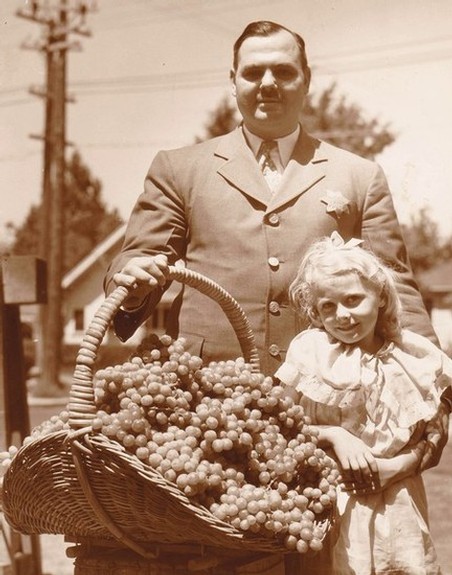
In 1934, the year of the first Lodi Grape Festival, Police Chief Clarence Jackson—founder of this yearly four-day festivity, still held today—with his daughter Inez and a basket of Lodi's signature agricultural crop, Flame Tokay. The year before, Chief Jackson also played a major role in suppressing the 1933 Lodi grape pickers strike, which ended violently. Lodi Grape Festival.
Continued from Story of an appellation—Part 4, the Lodi populace from the 1800s to today
The labor movement in Lodi
Cesar Chavez (1927-1993), co-founder of United Farm Workers (UFW), is now enshrined as an American folk hero and firebrand spokesman for laborers of not just Hispanic descent, but also Filipinos and other Asian immigrants. In In the Valley of Fear (2018), Michael Greenberg mentions Chavez in terms of the multiple ethnic groups that have driven San Joaquin Valley's multi-billion dollar agricultural industry since World War II:
When Cesar Chavez started organizing farmworkers in the 1950s, his son said, 12 to 14 percent of field hands “were still Okies and Arkies, the Steinbeck people,” and 8 to 10 percent were African-Americans brought in by cotton planters during the boll weevil infestation in the 1920s. About 12 percent were Filipino, and 55 percent were Mexican, “half of them Mexican nationals, the other half first-generation Americans like my father.”
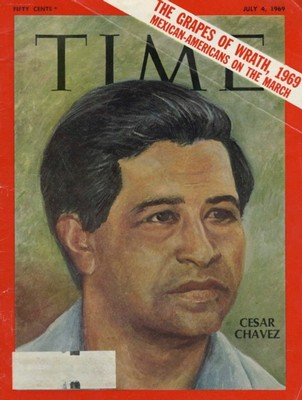
Today, at least 80 percent of farmworkers are undocumented Mexicans, the majority of them Mixteco and Trique, indigenous people from the states of Oaxaca, Sinaloa, and Guerrero—the poorest regions in Mexico—who speak no or very little Spanish, much less English. Most of them have been working the fields for at least a decade, have established families here, and live in terror of la migra, as Immigration and Customs Enforcement (ICE) is called, and instant deportation or imprisonment that would wrench them from their children.
Chavez, of course, is famously associated with grape strikes and the national grape boycott that took place during the late 1960s, affecting Lodi as much as the rest of California's Central Valley.
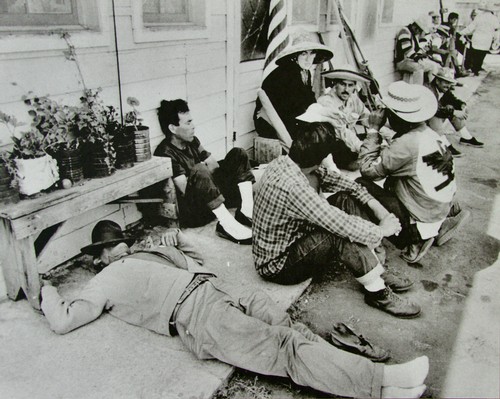
Grape strikers at rest in Lodi during the spring 1966 300-mile walk from Delano (in Central Valley's Kern County) to Sacramento. San Joaquin County Historical Museum. San Joaquin County Historical Museum.
In a May 2018 Lodi News-Sentinel article entitled A look back...[at] 1968's headlines, Kyla Cathey recounted how the boycotts "came to Lodi in the form of a letter"...
“Cesar Chavez has demanded that Lodi table grape growers meet with him at 10 a.m. today in Fresno to negotiate a collective bargaining agreement,” reporter Myrtle Mays wrote on Aug. 12... “Who does this guy think he is, sending threatening telegrams and letters?” one grower told the News-Sentinel.
The boycotts led to turmoil in Lodi anyway. In early August, the Lodi Council of Churches could not come to an agreement over whether or not to stand with the boycott. For farmworkers, the boycott was the only negotiating tool they had, Father Harmon Skillen of Stockton told the News-Sentinel.
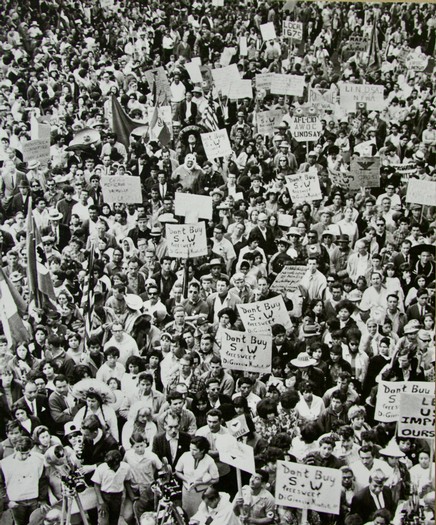
On April 10, 1966, grape strikers—primarily Mexican- and Filipino-Americans—rallied at the California State Capitol in Sacramento at the end of their 300-mile walk, sparking another four years of labor strife in Central Valley. San Joaquin County Historical Museum.
But Lodi grape growers weren’t large, corporate-owned farms like some in California. A boycott of Lodi grapes could do “irreparable damage” to small growers, Mrs. Charles Deal of Lodi’s First Congregational Church said in an Aug. 6 story...
However, the grape boycott would not be resolved in 1968. Attempts by grape growers throughout the state to have the boycott shut down as illegal went nowhere. “I fail to see how the grape boycott could be an illegal secondary boycott,” California Attorney General Thomas Lynch told the State Labor Council on Sept. 23.
The boycott would last until July 1970, when the United Farm Workers union headed by Chavez succeeded in reaching a collective bargaining agreement with table grape growers.
Still, Lodi growers saw a good Tokay season in 1968, they reported on Oct. 12.
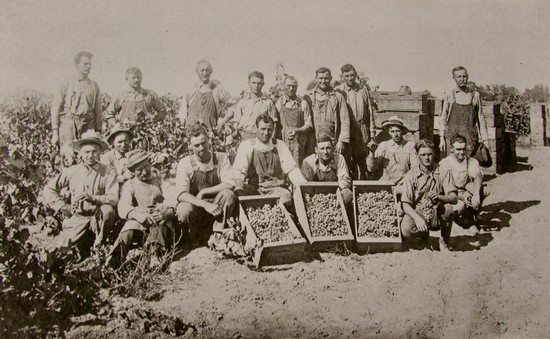
1915 Flame Tokay harvest in the William Micke Vineyard, south of the City of Lodi. San Joaquin County Historical Museum.
On the other hand, the rash of agricultural industry strikes taking place throughout California's interior in 1933 were of a considerably more violent nature. Labor unrest erupted in Lodi as well as the rest of San Joaquin Valley, including Kern, Tulare, Stanislaus, and Merced counties. Yet a September 2014 Lodi News-Sentinel put the events of Lodi's 1933 grape pickers strike in a somewhat positive light, in an article entitled Grape pickers strike unifies Lodi residents in 1933.
The gist of this 2014 article was that on September 26, 1933, some 5,000 workers in the Lodi area were informed of the results of contract negotiations. The growers' offer amounted to an hourly pay of approximately 25 cents an hour. The workers voted to strike for 40 cents. A work stoppage at that time of year would potentially leave much of the 1933 harvest to languish in the fields.
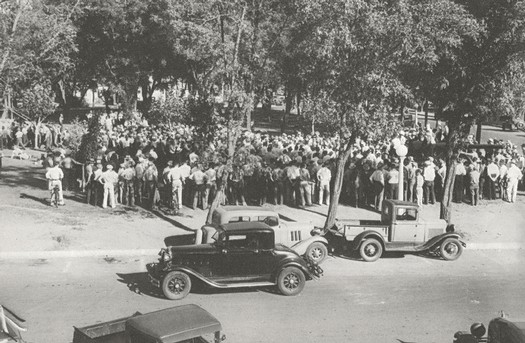
Meeting of grape strikers (plus onlookers and vigilantes) on October 5, 1933, at Lodi's Municipal Park (now called Hale Park). Lodi News-Sentinel.
In the ensuing days, the union organized picketing at their Lodi headquarters and selected vineyards, threatening to intimidate or block strikebreaking scabs willing to pick grapes for lower wages. For their part, the grape growers and local business leaders mobilized to swear in over 100 special deputies plus a 1,700-man "vigilance committee" empowered to arrest the union organizers—representatives of the Cannery and Agricultural Workers Industrial Union, termed outside "agitators" by Lodi News-Sentinel—or to run them completely out of the county, which they proceeded to do with significant force (employing guns, clubs and fists) over the following days.
When strikers met on October 3, 1933, at Lodi's Municipal Park (now called Hale Park), east of Stockton Street, the Lodi Fire Department helped disperse the crowd of some 1,800 people (both strikers and curious onlookers) by turning on fire hoses. One "prominent shipper and vineyardist," according to an account in Labor Unionism in American Agriculture (United States Department of Labor, 1945) is quoted to have incited the "vigilante mob" facing down picketing workers by shouting: "What are we waiting for? To hell with the peace talk! Let's get them moving!"
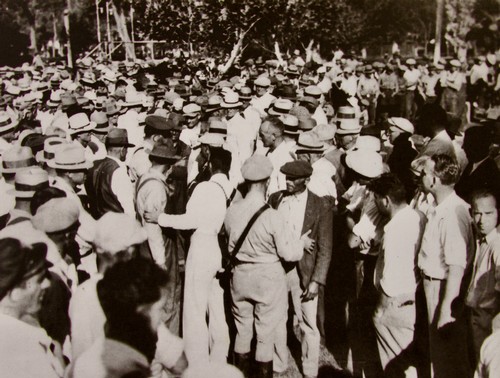
Lodi grape strikers were rounded up on October 12, 1933, following the shooting death of a vineyard foreman the week before. San Joaquin County Historical Museum.
The tension reached a peak immediately after October 5, 1933, when a Lodi vineyard foreman was shot dead during an attempt to arrest an organizer at a home on E. Locust Street. The perpetrator was eventually caught, but not before about 500 strikers and organizers were rounded up, searched, and questioned at Municipal Park. The sheer shock at this level of violence, if anything, led to an almost immediate quelling of the conflict.
From the striking workers' perspective, the 1933 strike ended up a failure mostly because CAWIU made the tactical error of not adequately organizing workers beforehand—evidenced by the fact that growers were able to get their grapes picked with adequate labor, even if slightly delayed—and, according to Labor Unionism in American Agriculture: "In stipulating a wage rate of 50 cents or even 40 cents per hour, the strikers were setting a figure far in excess of the rate currently paid in other crop areas" [i.e., other fruit industries and, further south in San Joaquin Valley, California's cotton belt]..."
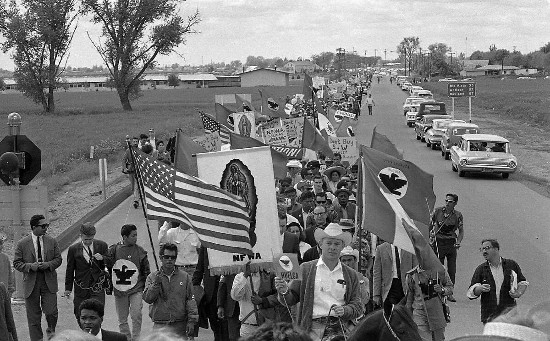
1966's 300-mile walk of striking vineyard workers from Kern to Sacramento counties. San Francisco Chronicle.
It also did not help that strikers refused to meet with the Deputy State Labor Commissioner empowered by the National Labor Board, who theoretically might have been able to apply pressure on the growers to negotiate. In any case, writes Lodi News-Sentinel in the 2014 article on the 1933 strike:
“Lodi citizens handled themselves splendidly during the agitation,” the Lodi Sentinel editorialized later in October... Later in 1933, Lodi’s acting Chief of Police Clarence Jackson rented a hall and hosted a men-only banquet to thank the officers, firemen, and volunteers who helped keep the peace. The idea of starting a community-wide celebration called the Lodi Grape Festival was hatched during this banquet.
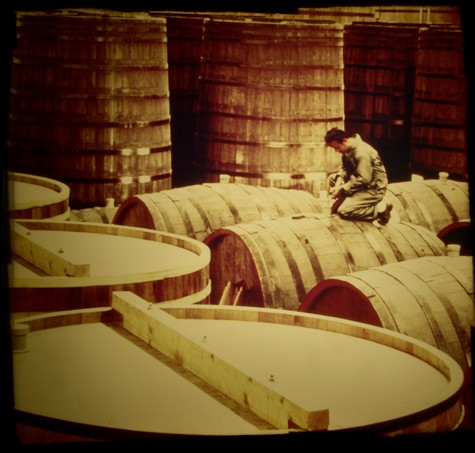
Large neutral wood tanks were typical of the California wine industry during the 1960s and 1970s. San Joaquin County Historical Museum.
Photo-memories of the Lodi Grape Festival
Similar to the pride felt by the incorporation of the City of Lodi which led to the monumental 1907 Tokay Carnival, the first Lodi Grape Festival was held in 1934, partly to celebrate the previous year's decisive victory over the labor movement, and partly to mark the Repeal of Prohibition (officially passed on December 5, 1933) plus the continuing success of Lodi's grape industry—especially the region's signature Flame Tokay, one of the nation's most celebrated table grapes. Lots to feel good about.

1936 Lodi Grape Festival, a three-day harvest festival kicking off under the city's historic Mission Arch. Ralph Lea, Lodi Historic Society.
Lodi Grape Festival and National Wine Show Association, Inc. has remained a nonprofit entity, originally established to promote San Joaquin County's agriculture and agricultural products. This 501(c)5 is contracted to put on a Lodi Grape Festival & Harvest Fair each fall during the September harvest season, as well as an annual Lodi Spring Wine Show.
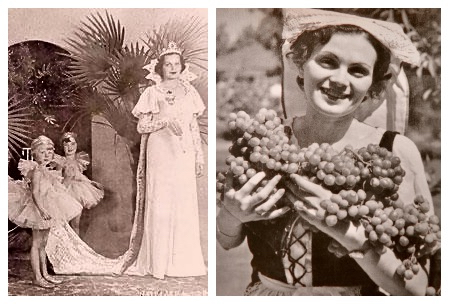
The first Lodi Grape Festival Queen Tokay in 1934, Marie Graffigna. Lodi News-Sentinel, Lodi Historical Society.
The first Lodi Grape Festival Queen was a 21-year-old graduate of Lodi Union High School named Marie Graffigna. It was a very, very big deal. As a September 2004 Lodi News-Sentinel article reminisces:
In the waning years of the Great Depression, Marie Graffigna was a well-liked young woman who likely turned a few heads when she walked along the downtown sidewalks. But her quiet life changed dramatically... when she was crowned the first queen of the first Lodi Grape Festival and became an endearing symbol of that groundbreaking harvest celebration...
Graffigna was photographed and her image was featured on Southern Pacific passenger train dining menus. She also was pictured on the "Tokay Queen" box label of her uncle John Graffigna's grapes shipped all over the world.
For her coronation, Graffigna wore a regal velvet dress and a robe adorned with 120 yards of silver ribbon which Woman's Club members stayed up nights sewing on by hand. An estimated 8,000 people crowded onto Lodi Union High School's Flame Field to view the queen's coronation during the September festival.
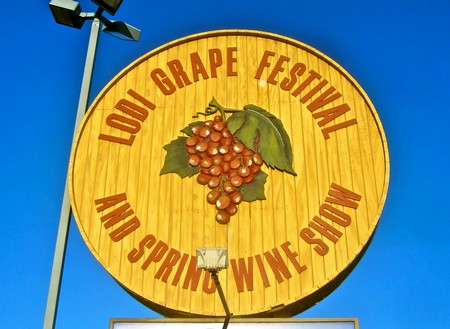
The barrel-themed sign for the city's permanent Lodi Grape Festival grounds.
Nowadays the Lodi Grape Festival takes place on the permanently established 20-acre Lodi Grape Festival fairgrounds, consisting of exhibition halls and venues expansive enough for simultaneous live entertainment, colorful carnival rides, and all the legendary treats, such as 1-ft. long local gourmet sausages, turkey legs, and deep-fried Oreos.
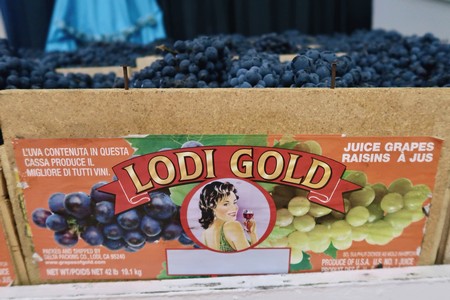
Crate of "Lodi Gold" wine grapes on display at the 2023 Lodi Grape Festival.
Adds Lodi News-Sentinel:
Like the queen contest, the Lodi Grape Festival has evolved since it began [in 1934]...The festival and Lodi have endured through World War II, wars in Korea, Vietnam, the Persian Gulf, and Iraq, and a population surge from 6,000 in 1934 to almost 60,000 in 2004. Although a queen no longer reigns over Lodi's harvest celebration, the Lodi Grape Festival today remains the community's annual tribute to the region's primary crop.
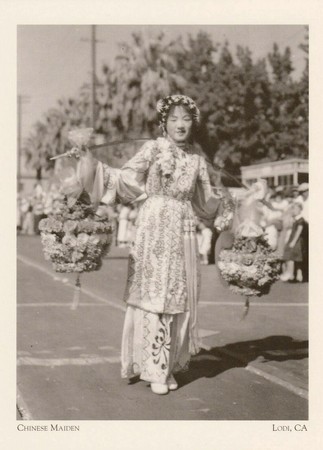
Postcard "Chinese Maiden"—Lodi market owner Lock Kin On—marching in the 1936 Lodi Grape Festival Grand Parade on Pine Street. Lodi Historic Society.
Alas, the last of the community-elected Queen Tokays and attendant Courts of Grape Festival Princesses presided over the fall festival in 1980. The reason, according to accounts, was "lack of interest."
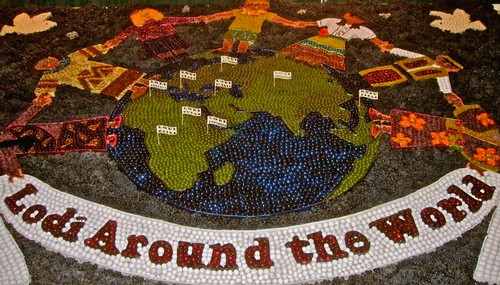
Spectacularly intricate grape mural in 2010, one of many that are created and displayed at every Lodi Grape Festival, utilizing fruit donated by Lodi grape growers.
While enthusiasm for the royal trappings and the Grand Parades down Lodi's historic Pine Street has waned, memories of past 4-day fall celebrations have been kept alive by exhibits of gowns, dresses, and photographs, shown in the Grape Festival main exhibition hall (Ole Mettler Grape Pavilion) alongside the lavish displays of "grape murals" as well as the wide range of table and wine grapes presented in classic 36-pound crates, all contributed by local growers and wineries.

Bokisch Vineyards Marketing Coordinator Elvira Gutierrez with displays of Flame Tokay and all the major wine and table grapes at the 2023 Lodi Grape Festival.
A photographic walk through Lodi's past, primarily centered around the region's signature Flame Tokay grape...
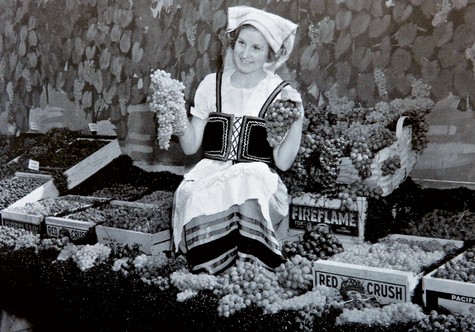
1937 Lodi Grape Festival beauty in traditional German garb with Flame Tokay and other grapes grown in the Lodi region.
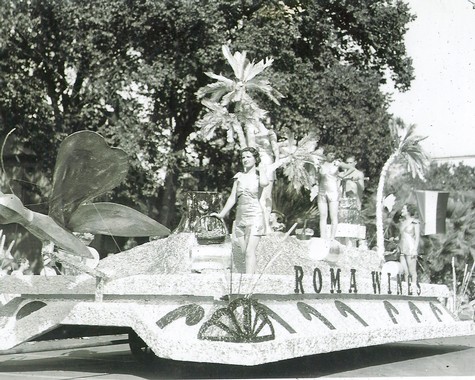
Late 1930s—Roma Wines float at the Lodi Grape Festival parade. San Joaquin County Historical Museum.
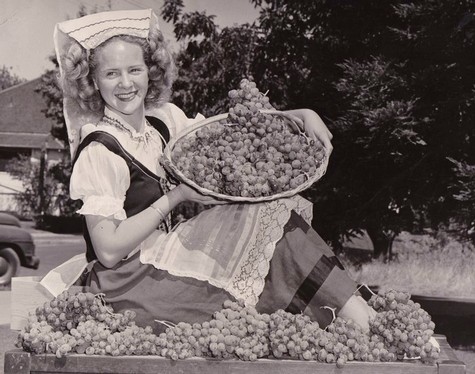
1930s Lodi Grape Festival Princess proudly displaying plump Flame Tokay grapes. Lodi Grape Festival.
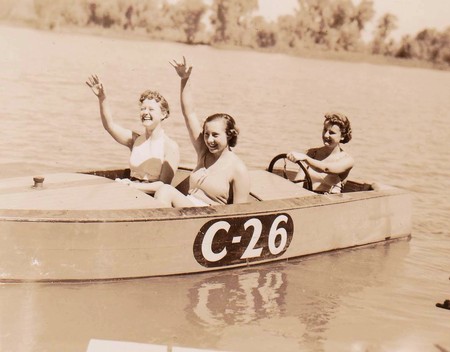
During the summer of the 1930s, Lodi Grape Festival Court hopefuls waving to the crowd on Lodi Lake. Lodi Grape Festival.
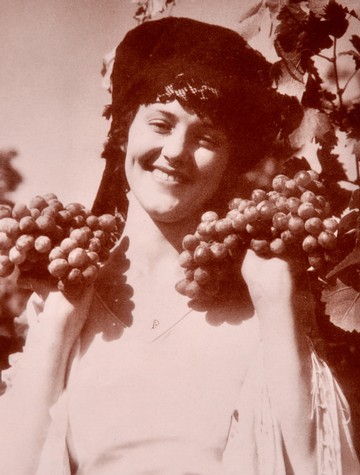
In 1937 Laura Gardner—née Laura Ortez, who served as a 1934 Court Princess—shows off Flame Tokay in a Lodi Grape Festival publicity photo.

The Lodi Grape Festival Royal Court during the late 1930s. Lodi Grape Festival.
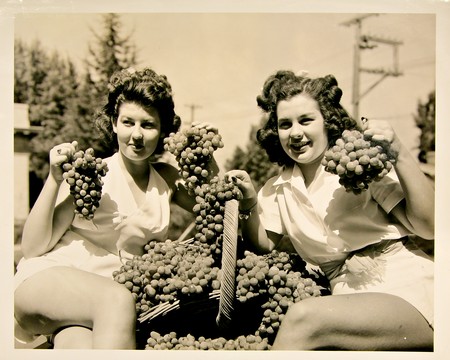
1941 Lodi Grape Festival beauty queens showing off Lodi's #1 (at the time) agricultural product, Flame Tokay grapes. Lodi Grape Festival.
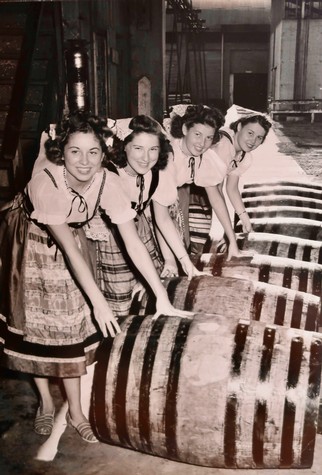
"Roll out the barrels"—1941 Lodi Grape Festival publicity photo taken at East-Side Winery. Lodi Grape Festival.
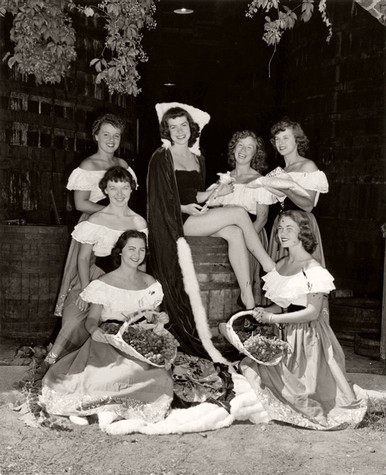
The Lodi Grape Festival Royal Court during the 1940s. Lodi News-Sentinel.
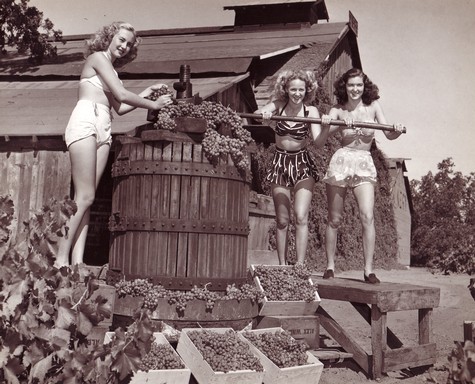
1940s Lodi Grape Festival publicity photo showing off Flame Tokay around a wood press and vineyard barn. Lodi Historic Society.
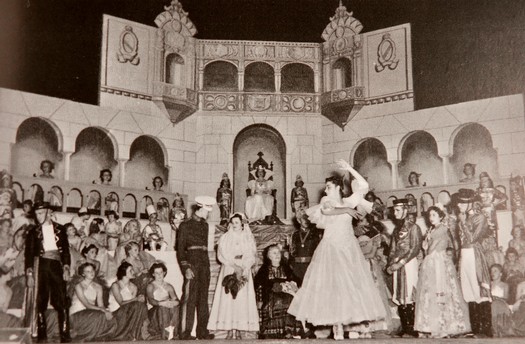
In 1946, costumed dancers performed before Grape Festival Queen Janie Miller and her Court of Six Princesses.
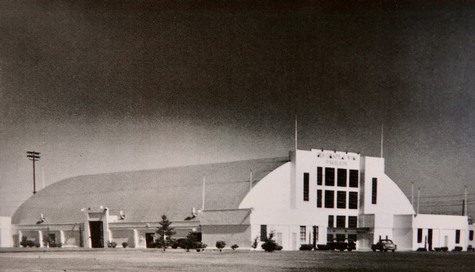
In 1949 the Lodi Grape Festival permanently moved to the Lodi Grape Festival grounds and main exhibition hall called the Lodi Grape and Wine Pavilion (now called Ole Mettler Grape Pavilion). Lodi Historical Society.
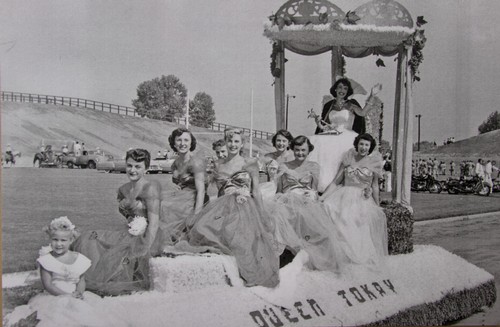
1951's Queen Tokay and her Court atop a Lodi Grape Festival float. Lodi Grape Festival.
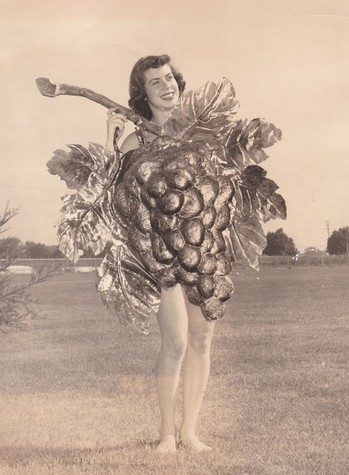
Almost avant-garde-like Flame Tokay costume worn by 1952's Lodi Grape Festival Queen Carol Ratty. Lodi Grape Festival.
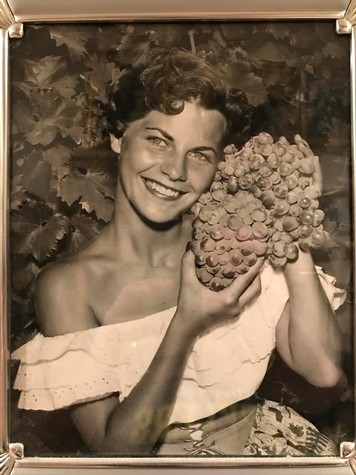
1955 Lodi Grape Festival Queen, Alice Bauer. Courtesy photo.
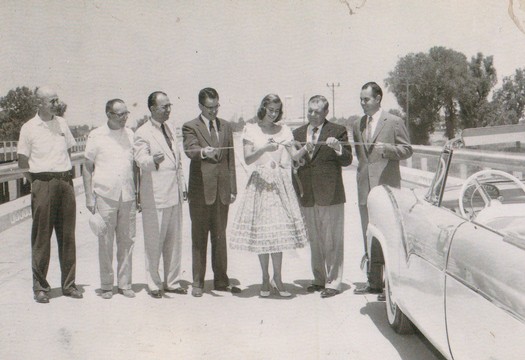
In July 1957, newly elected Lodi Grape Festival Queen Janice Leach performed her civic duty, ribbon cutting over a new section of California Hwy. 99 in the Lodi area. Lodi News-Sentinel.
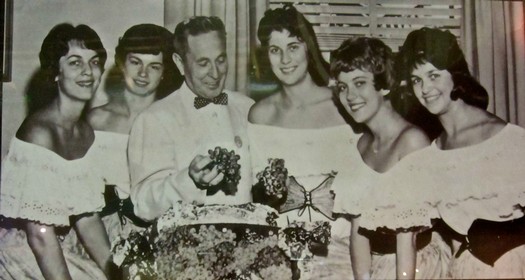
The 1960 Lodi Grape Festival Court with signature Flame Tokay grapes. Lodi Grape Festival.
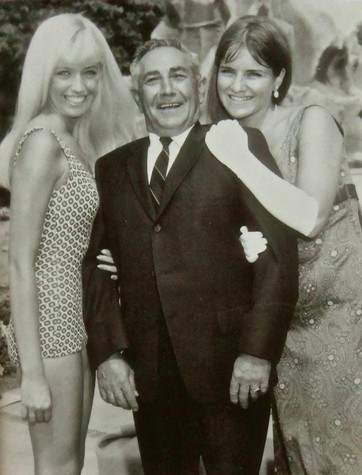
In the era of America's Summer of Love, a 1967 Lodi Grape Festival Princess and Queen with the Lodi Grape Festival president. Lodi Grape Festival.
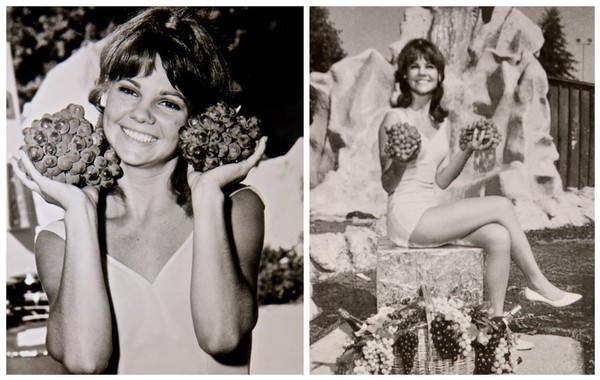
1969 Lodi Grape Festival's Queen Lana Mirko with hefty clusters of Flame Tokay. Lodi Grape Festival.
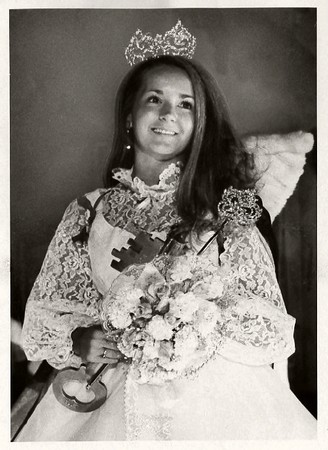
1973 Lodi Grape Festival Queen Rhonda Malsam. Sacramento Bee.
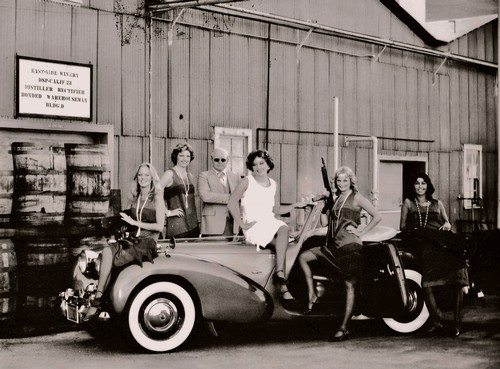
The 1978 Lodi Grape Festival Court channels Bonnie and Clyde: (from left) Lisa Fuller, Donna Glass, Queen Tammy Culver, Darcy Walker and Julie Abbley. Lodi Grape Festival.
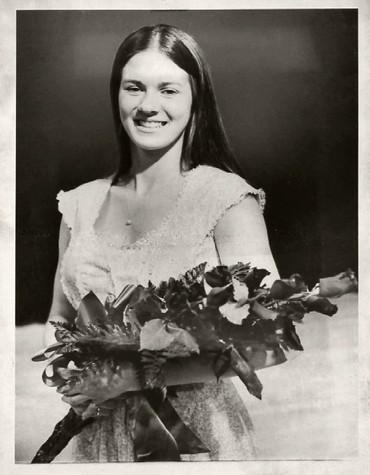
1975 Lodi Grape Festival Queen Nancy Sue Johnson, was a Lodi High School senior at the time of her coronation. Center for Sacramento History Photo Collection.
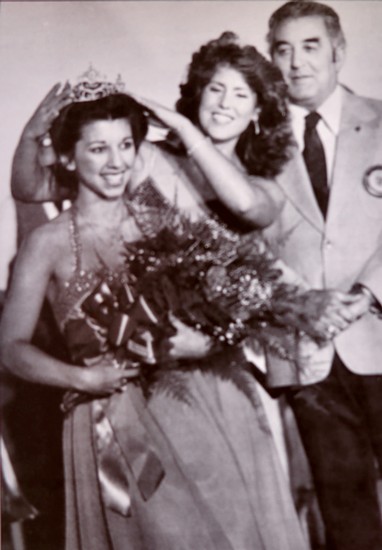
The last of the Lodi Grape Festival Queens, 1980's Angela Parises, is crowned by 1979 Queen Bettina Naylor. Lodi Historical Society.